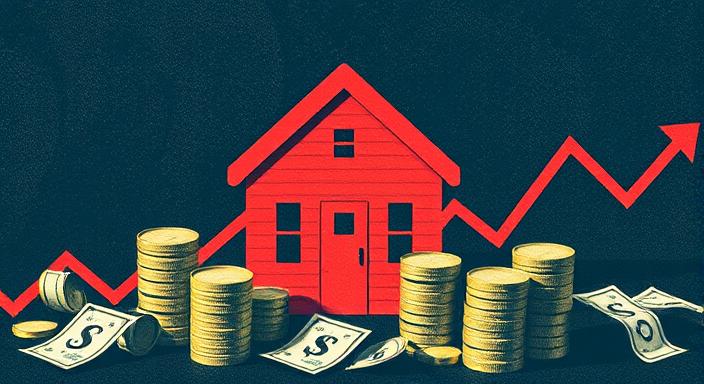Making Money in Market Crashes: An Investment Manual for Downward Markets. Profit From
This study shares useful insights and tips for making money in bear markets. The author, with 35 years of investing experience, emphasizes the importance of preparation. This insight comes from “How to Profit from a Recession: A Guide to Investing During a Market Downturn.” It’s vital to understand your position in market cycles. You also need to know what tactics work best in each market condition.
I. Types and Frequency of Market Declines
The paper outlines three main types of market declines. It focuses on how often they happen and their key features:
Market Correction: A fall of 10 percent or more from a recent high. These happen often, about “every 1.2 years since 1980.” Most of the time, the market is “realizing it is getting a bit expensive and coming off prices a bit.”
Bear Market: A drop of over 20% from a peak. Larger corrections happen less often. They occur, on average, every 4 years and 8 months since 1932. These corrections last about 289 days, or roughly 9.6 months. The author compares this to bull markets, which usually last about 965 days, or 2.6 years.
Stock Market Collapse: A brief duration marked by a 30% decline in the stock market. They are “very uncommon,” but they can happen. The author mentions a possible political event as a source of a shattering.

Key Takeaway: “If you struggle with some dips in the stock market, you are not investing properly.””
II. The Three Stages of a Market Crash and How to Navigate Them
The writer presents a three-phase plan for how these crashes happen. They also share specific actions investors should take in each phase:
Phase 1: The Euphoria Phase (Market Peak & Irrational Exuberance) Profit From
At this stage, “irrational exuberance drives prices up to unsustainable levels.” Everyone feels happy, good, and on top of the world.”
Warning Signs:
Boom Time for Consumer Spending: “Suddenly, everyone had cash. They spent thousands, and the economy boomed. The recent NFT craze shows “too much money in circulation.””
**Easier Credit Access/Surge in Housing Market:** “The housing market is booming. So, credit is easier to access.””
Newbie investors are flooding the market. When everyone feels good about investing, it might mean trouble. Prices often rise because of these new investors.”
Recommended Actions:
**Assess and Reduce Risk Aversion:** Aim for steady gains rather than chasing big returns.’ The author compares this to the “tortoise and the hare” approach.
Cut Leverage/Margin Debt: Leverage can boost your wealth, but it’s risky during a crash. Margin calls can add to that risk. The writer avoids the margin. He has seen too many friends go from millionaires to broke.
Put extra cash in a high-interest savings account.
This helps you save more and boost your emergency fund. Then, you’ll have money to invest when the market dips.
Diversify Investments: “Spread my investments across my portfolio.” Don’t put all your eggs in one basket.”” This lowers the risk because “you don’t know which sector is going to get hit the worst.” Investors should steer clear of putting all their money in one stock. Instead, they can choose a “total U.S. stock market fund.” High-yield cash accounts also provide a safer way to diversify. They earn you money when you set aside your investment.
Phase 2: The Reckoning Phase (Reality Hits & Panic Selling)
This stage shows when overvaluation hits. It sparks widespread panic and sell-offs. The market thunders down, and you can hardly escape the impact.”
Challenges:
Human psychology and panic selling:
When fear strikes, many people rush to sell their investments to avoid losses. “Everyone says they’re long-term investors until the market blows up,” the author emphasizes.
Confirmation bias: You must “hold steadfast” if you “believe in your investments.” That takes understanding “the fundamentals of a company before investing in its stock.”
Recommended Actions:
**Stay Rational When Buying:** Druckenmiller shares Peter Lynch’s experience with Kaiser Industries. He says that if you know a stock’s fundamentals, you won’t panic when its price falls.

Don’t try to time the market. A Fidelity study on S&P 500 index funds says it can hurt your returns.
Buy The Dip/Accumulation Mode: “Cash is King” of the baby bull. The writer mentions “going on a buying spree” for stocks and businesses. They use a “dollar-cost averaging” strategy to invest a few times each week.
**Keep and Boost Your Income:** “Maintain a steady income. Also, boost it with a side hustle during tough times. The more assets you have, the more you can invest.””
“That’s Not All, Folks” Short Stocks (with caution). I usually stick to one approach. But people like Michael have done well with diversification.
Phase Three: The Phoenix Phase (Market Recovery and Rebuilding)
This last stage is the recovery phase. Here, the market rises from the crash and often goes above the previous highs.
Characteristics:
Slow Recovery. The author notes that after the 2008 crash, “things began to get better” about four years later. It took more than four years for a full return to normal.
Purpose of the “Crisis” Opportunity:
Success often hides in the chances found during crises and tough times.
Takeaway: “A bull market is all but guaranteed to follow a bear market.”
III. Overarching Principles for Long-Term Success
While the document reiterates the following five core principles:
Preparation is Key: Being well-prepared helps investors from the chaos.
Long-Term View: A bull market follows a bear market, so it’s important to stay focused on the long term.
Risk management is key. It means finding and reducing risks. Use enough leverage and diversify to strengthen your strategy.
“Regularly purchasing stocks in a diverse portfolio increases your chances of high profits.””
Closing Thought:
The author thinks that managing risk, diversifying, and sticking to a solid investment plan can help you earn money during and after a market downturn.


